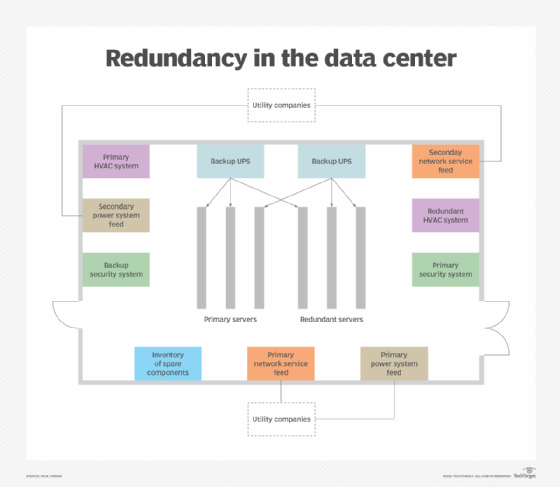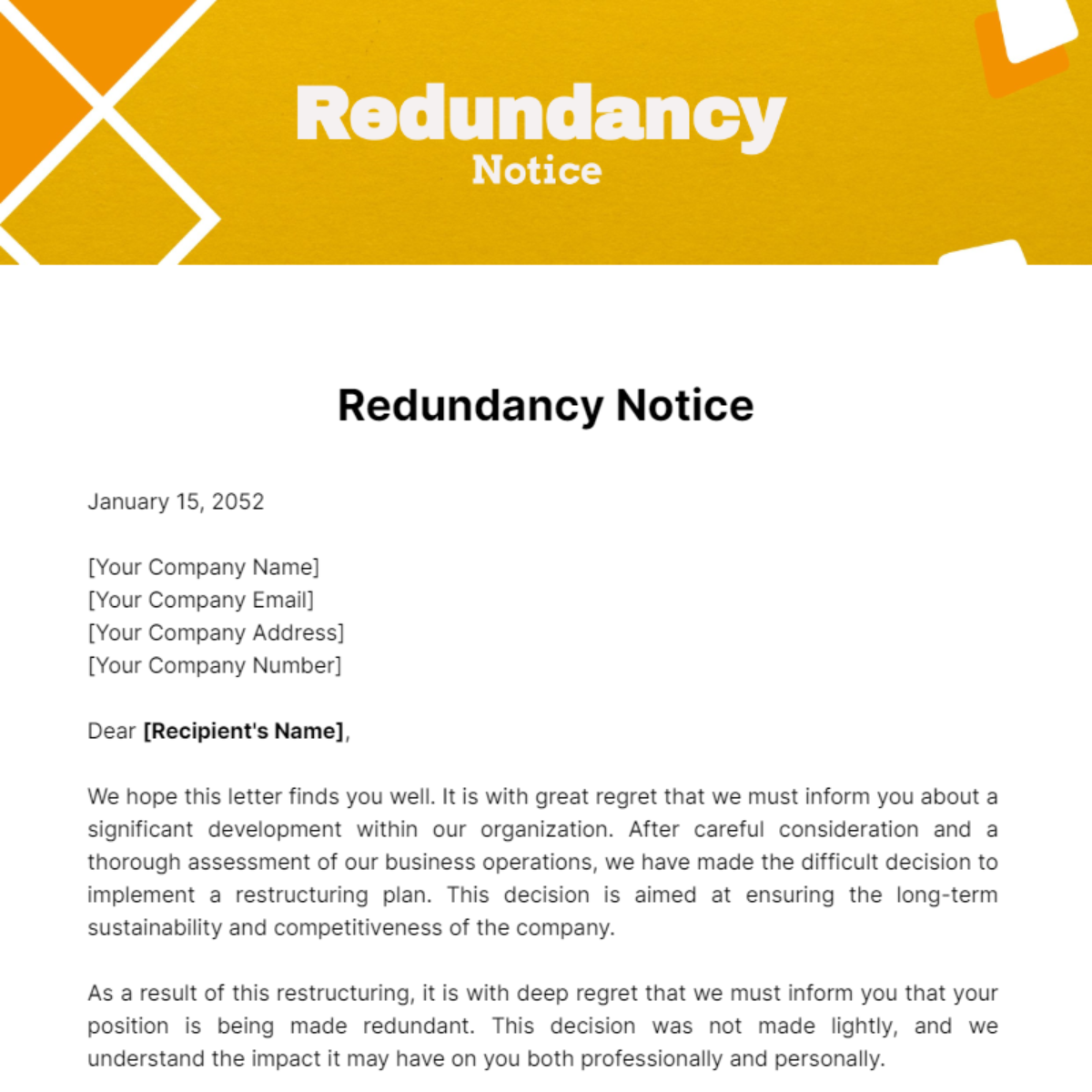Who Pays Redundancy Money? Comprehending Company Duties in the UK
Who Pays Redundancy Money? Comprehending Company Duties in the UK
Blog Article
Discovering the Operational Dynamics of Firm Redundancy and Its Long-Term Sustainability

Redundancy Methods for Business Continuity
In order to ensure nonstop procedures, businesses have to execute efficient redundancy techniques for business continuity. Redundancy in this context describes the replication of essential components or features within a system to mitigate the impact of prospective failings. By including redundancy methods, companies can boost their durability against interruptions triggered by numerous aspects such as all-natural catastrophes, tools failures, or cyber-attacks.
One common redundancy strategy is the execution of back-up systems and information storage solutions. This entails creating duplicates of essential data and systems that can be activated in situation of a key system failure. In addition, organizations can establish redundant communication channels and power resources to keep connectivity and procedures throughout unpredicted occasions.
Moreover, cross-training employees to carry out several roles within the company can work as an important redundancy technique. If essential employees are not available due to health problem or other factors, this makes certain that important tasks can still be carried out even. On the whole, efficient redundancy methods are essential for organizations to maintain functional connection and lessen the impact of possible disruptions.
Effect of Redundancy on Organizational Durability
Provided the essential duty redundancy approaches play in ensuring business continuity, checking out the effect of redundancy on organizational durability comes to be vital for understanding the alternative operational characteristics of a business. Business durability refers to an entity's capability to adapt to disturbances, recoup from troubles, and transform when required while preserving core features. Redundancy, when strategically executed, can dramatically add to boosting an organization's strength in the face of unforeseen challenges. By having backup systems, employees, or processes in position, companies can better withstand shocks and continue procedures with minimal disruption.
Furthermore, redundancy can bolster worker spirits and self-confidence, recognizing that there are contingency strategies in place to deal with unanticipated situations. This complacency can lead to enhanced performance and a more positive workplace. Additionally, redundancy can cultivate technology and creative thinking within an organization as staff members really feel equipped to take computed dangers, recognizing that there is a safety web to sustain them in instance of failure. In general, the effect of redundancy on organizational durability is profound, forming the long-lasting sustainability and success of a company.
Stabilizing Efficiency and Adaptability in Redundancy
Accomplishing a harmonious equilibrium in between operational performance and More Info adaptive versatility is a critical obstacle in the strategic release of redundancy within organizations. Efficient procedures are important see here for maintaining productivity and cost-effectiveness, ensuring that resources are made use of optimally. Nevertheless, too much focus on effectiveness alone can cause strength, making it challenging for companies to adjust to unanticipated adjustments or challenges. On the various other hand, adaptability permits organizations to respond nimbly to advancing circumstances, cultivating advancement and strength. Yet, too much adaptability without a strong operational structure can lead to inefficiencies and variance.
To stabilize efficiency and versatility in redundancy planning, companies need to very carefully analyze their functional requirements, market dynamics, and critical goals. Implementing lean practices can improve efficiency by removing and enhancing procedures waste, while cultivating a culture of adaptability and constant improvement can boost flexibility. Furthermore, purchasing cross-training programs and robust communication channels can aid cultivate a flexible labor force qualified of handling varied jobs throughout durations of change. Inevitably, locating the best equilibrium in between efficiency and adaptability see is critical for building a resistant and sustainable company when faced with uncertainty.
Long-Term Sustainability With Redundancy Planning
To make sure long-lasting stability and stability, organizations have to strategically align their redundancy preparation with lasting sustainability goals, thereby integrating functional efficiency with flexible adaptability. Firms should see redundancy not as a reactive solution to instant issues yet as an aggressive strategy for long-term success.

Proactive Procedures for Lasting Firm Operations
Exactly how can firms proactively enhance their operational sustainability for long-lasting success? Applying aggressive actions is vital for firms intending to make certain sustainable operations. One crucial strategy is to invest in technology and technology to improve processes, reduce waste, and stay affordable out there. Taking on lasting techniques such as reducing energy consumption, reducing carbon footprint, and enhancing source use can not only benefit the atmosphere however likewise cause cost savings in the future.
Furthermore, fostering a culture of continuous renovation and understanding within the organization can improve versatility to changing market problems and consumer demands. Urging staff member participation in decision-making processes and providing opportunities for professional development can boost spirits, efficiency, and general efficiency. Developing clear objectives, checking crucial performance indications, and frequently reviewing development are vital parts of positive sustainability management.
Working together with distributors, consumers, and other stakeholders to promote lasting practices throughout the supply chain can create a surge effect of favorable influence - redundancy pay if company goes bust. By taking positive steps in the direction of operational sustainability, business can develop resilience, drive development, and protect their lasting success in an ever-evolving service landscape
Verdict

In the world of organizational monitoring, the calculated deployment of firm redundancy stands as an essential yet complex practice that demands a delicate equilibrium between operational performance and long-term stability. By exploring the functional dynamics that underpin business redundancy and examining its wider effects for organizational strength and adaptability, a nuanced understanding of exactly how redundancy techniques can form the future trajectory of a company starts to unfold.Given the essential function redundancy approaches play in making sure business continuity, exploring the impact of redundancy on organizational strength becomes critical for understanding the all natural operational characteristics of a company. In general, the influence of redundancy on business resilience is profound, shaping the lasting sustainability and success of a firm.
In conclusion, recognizing the operational characteristics of firm redundancy is essential for making sure lasting sustainability.
Report this page